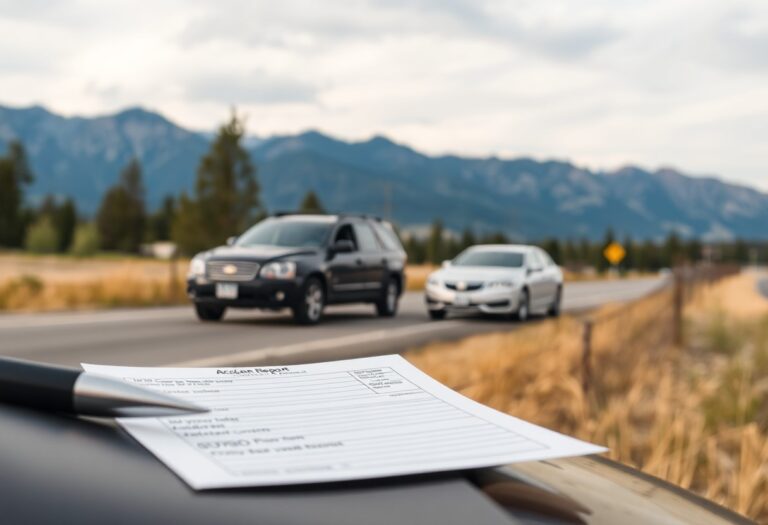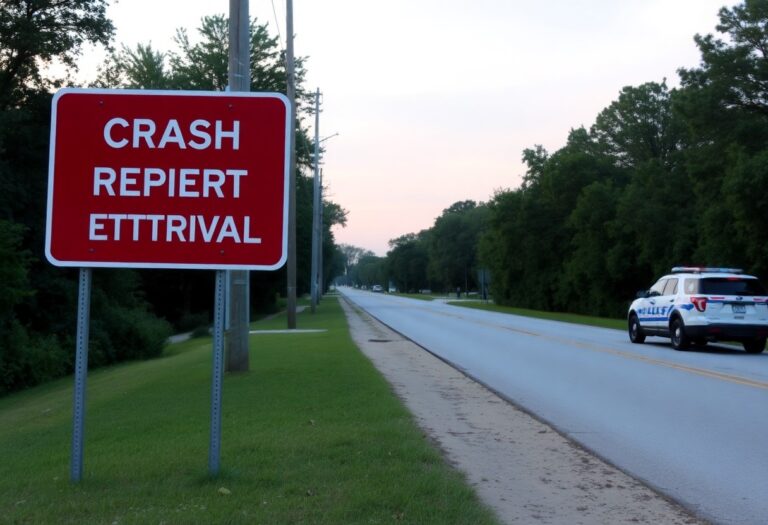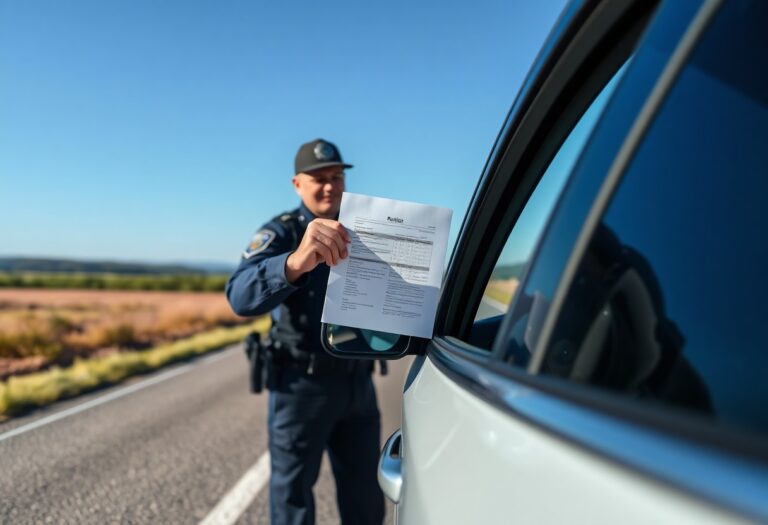Elk County is a vibrant region, but with busy roads comes the potential for car accidents. If you have been involved in an incident, obtaining your car accident report quickly can help you manage insurance claims and legal matters effectively. Here, you will find direct access to the necessary resources and information needed to request and obtain your report promptly, enabling you to navigate this challenging situation with confidence and efficiency.
Navigating Elk County’s Accident Report Landscape
Understanding how to navigate Elk County’s accident report landscape can simplify your search for vital documents after a car accident. Multiple agencies play specific roles in documenting and distributing accident reports, which can be confusing if you’re not familiar with the process. Each agency has its own procedures and requirements, but knowing where to go and what to expect will streamline your access to the information you need.
Key Agencies and Their Roles
Law enforcement, insurance companies, and local authorities are the primary players in Elk County’s accident report ecosystem. The Pennsylvania State Police is responsible for filing official reports, while local police departments may cover specific municipalities. Your insurance provider will also need these reports to process claims, so keeping open lines of communication with these parties is beneficial.
Accessibility of Accident Reports
Accessing accident reports in Elk County is generally straightforward, but the procedures can differ depending on the agency involved. Reports created by the Pennsylvania State Police can typically be requested online, by mail, or in person at district offices. Local police departments may have varying policies, and some may charge a nominal fee for copies. Understanding these processes can save you time and ensure you obtain the needed documents without headaches.
For instance, the Pennsylvania State Police offers an online portal where you can view accident reports in just a few clicks. Alternatively, if you prefer a more personal touch, visiting a local police department might yield quicker results, especially if you have specific questions regarding your report. Being organized with all necessary information, like report numbers and locations, helps expedite inquiries and facilitates faster access to your accident documentation.
The Step-by-Step Process to Obtain Reports
| Method | Details |
|---|---|
| Online Request | Fill out the necessary forms on the Elk County website and submit electronically. |
| In-Person Inquiry | Visit the local law enforcement office or courthouse to request the report directly. |
Online Request Procedures
To initiate an online request, navigate to the Elk County official website where you’ll find the accident report request form. Provide required details, including the date of the accident, involved parties, and any report number if available. Submitting the request online offers the convenience of accessing your report without needing to visit in person.
In-Person Inquiry Protocol
When opting for an in-person inquiry, head to the nearest police department or courthouse. Bring along any pertinent information, such as the date of the accident and your identification. Be prepared to fill out a request form, and a small fee may be required for obtaining your report immediately.
For your in-person visit, it’s wise to check the office hours beforehand to avoid long waits. Some offices may have set times for report retrieval, and having all your paperwork in order can streamline the process. While there, you can also ask for clarification on any report details if needed, providing an opportunity to resolve any questions on the spot.
Understanding the Content of Accident Reports
Accident reports serve as vital documents that summarize the details of any vehicle collisions. These reports typically include vital facts such as the time and location of the accident, the parties involved, vehicle descriptions, and any injuries sustained. By accessing these reports, you can gain insight into the circumstances surrounding the accident, aiding in insurance claims or potential legal actions.
Essential Information Included in Reports
Typically, an accident report contains pertinent information like the names and contact details of the involved parties, license plate numbers, insurance information, and a detailed account of how the accident occurred. It may also include diagrams of the scene and witness statements, providing a comprehensive overview that helps reconstruct the event.
Common Misinterpretations of Report Details
Interpreting accident reports can be challenging due to specific legal jargon and the complexity of the incidents described. Some individuals may mistakenly assume that the report’s findings automatically determine fault or liability, overlooking the need for additional context. It’s easy to misread the significance of certain statements or data points, leading to misinformed decisions.
For instance, if a report indicates that one driver received a citation, it does not solely imply that they were entirely at fault. Such citations may relate to minor infractions unrelated to the accident’s cause. Additionally, you might find technical terms or abbreviations representing various aspects of the accident, which could be misinterpreted without proper context. Familiarizing yourself with common terminology and understanding the multifaceted nature of accident reports is vital for an accurate interpretation.
The Legal Implications of Car Accident Reports
Car accident reports hold significant weight in various legal contexts, influencing both insurance outcomes and courtroom proceedings. These comprehensive documents detail key information about the incident, including fault analysis, which can impact liability and restitution. Understanding how these reports affect your situation can empower you to navigate the aftermath of a collision confidently, ensuring your rights are protected throughout the process.
How Reports Affect Insurance Claims
Your insurance claim’s success heavily relies on the information contained in the accident report. Insurance adjusters use these reports to assess liability, determine damages, and evaluate coverage. An accurate and comprehensive accident report can bolster your claim, while inconsistencies or missing details might lead to complications, such as claim denials or reduced settlements.
The Role of Reports in Legal Proceedings
In legal proceedings, accident reports can serve as crucial evidence. Courts often rely on these documents to establish the facts of the case, including who was at fault and the extent of injuries sustained. If you find yourself in a lawsuit following an accident, the report may come into play during negotiations or as part of the evidence presented before a judge or jury.
Accident reports not only provide a factual basis but can also include witness statements, diagrams, and analysis, all of which contribute to the case’s overall narrative. For instance, if a report denotes the other driver’s reckless behavior, such as speeding or failing to yield, it can strengthen your case by proving liability. Additionally, discrepancies between the report and the testimony can be pivotal, impacting the outcome significantly. Leveraging the detailed insights from these documents can prove instrumental in securing a favorable resolution to your legal challenges.
Best Practices for Using Car Accident Reports
Utilizing car accident reports effectively can significantly aid in your understanding of the incident and enhance your safety on the road. Always review the report for accuracy, as any discrepancies can delay insurance claims or legal proceedings. Share the report with your attorney or insurance provider promptly to facilitate a smoother resolution process. Additionally, keep a copy of this report for your records to track trends or patterns that may emerge, ensuring that you stay vigilant on the road.
What to Do If You Are Involved in an Accident
After an accident, your immediate action should include ensuring safety and calling for medical assistance if needed. Exchange information with the other driver and gather details from witnesses. Document the scene with photographs and note the accident’s specifics, which will be invaluable when filling out your car accident report and during insurance follow-ups.
Leveraging Reports for Future Safety
Analyzing previous car accident reports can reveal critical insights that enhance your future driving safety. Observing patterns in accident locations or common causes, such as distracted driving or adverse weather conditions, allows you to adjust your driving habits accordingly. For example, if reports indicate frequent accidents on a certain intersection, you might choose alternate routes or exercise extra caution in that area.
Additionally, if you notice trends in your own driving history through the reports, such as multiple incidents related to speeding or lane changes, taking proactive steps to address these behaviors can mitigate future risks. Engaging in defensive driving courses can also be beneficial, enhancing your skills and awareness of potential hazards. By leveraging accident reports, you position yourself to make informed decisions that promote safer driving habits, ultimately reducing the likelihood of future accidents.
Final Words
From above, you can see that obtaining car accident reports in Elk County, Pennsylvania, is a straightforward process. With the right resources and information at your fingertips, you can efficiently access the reports you need. Understanding the steps to take and the options available can help streamline your experience, ensuring that you are well-informed and prepared moving forward. Don’t hesitate to utilize the tools presented to gain swift access to your necessary documentation.













